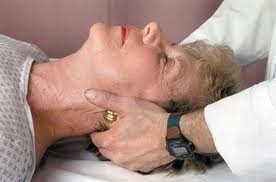Elderly Massage
benefits, contraindications, and tips for working with older clients!
Elderly massage clients can benefit from regular bodywork to reduce joint pain, edema, stress, and blood pressure.
But, gentle massage techniques can also decrease their fear, anxiety and the feeling of isolation.
Physically, it can stimulate circulation, bowels and flow of lymph, often much needed benefits to older clients.
Massage for aging client helps:
- Increase circulation and the overall sense of well-being that can be invaluable to the client. Many older people are in pain, feel sad and depressed or are tired of being alone.
- Provides a Caring Touch - They may feel discarded by their family. But, after an hour of attentive and caring touch, they may feel valued again.
- Provides Social Benefits - Studies show that social connections are a key element of good health for older people and isolation is very detrimental to health.
- Reduces edema and, joint pain and swelling
- Increases sense of well-being
- Stimulates lymph movement and bowel movement
- Decreases fear, stress, anxiety and depression
- Promotes relaxation, better sleep patterns, and deeper breathing
- Releases endorphins
Contraindications for elderly massage
- Severe inflammation of a vein
- Swelling or edema
- Aneurysm Blood Clot Bruises or skin sensitivities
- Open sores or wounds
- Recent heart attack, stroke, or flu
You must be willing to take the time to discuss medical issues, both recent and past, to access the information.
Massage tips for working with elderly massage clients
- Ask your client to dress in clothes that are simple and easy to remove because it takes older folks longer to undress and redress.
- You should also be comfortable working with a low table, as many older people cannot get up onto a high table.
- Extra time is required. It takes aging folks much more time to undress and redress.
- They also may walk and talk more slowly than younger people.
- Sometimes, you may need to help them redress.
- Set boundaries with older clients - this may be hard. They want to know about you and your family or they just don't want you to leave after the massage is over
- Ask the client to write their check before coming to their appointment or pay in cash
- Talk to your client about their preferences of being massaged on the table (partially clothed vs.nude, side-to-side, (if needed) prone and supine)
- Encourage them to be verbal about the amount of pressure the want or need
- Discuss each step of the massage, especially if massage is new for them, so they are less nervous and can relax
- Remind them that you are right outside the door if they need anything
- Call them to remind them of their appointment the day before If your client cannot hear well, speak clearly and if they have a hearing device, allow them to make the decision to take it off (or not) during the massage
There is a growing need for therapists who enjoy elderly massage clients, and a growing need from the elderly community for a compassionate, caring, healing touch.
Working with older folks, nursing homes, and hospice can be some of the most rewarding work in massage therapy. Through work with this population, therapists are introduced to people who are so appreciative of their touch and often verbally express this.
To read more about health issues that older folks face, please visit www.elder-one-stop.com.
Learn the best massage types of massage for working with elders in this Compassionate Touch Massage DVD which teaches the safest massage techniques, as well as how to grow your practice around this growing population.
This is a popular specialty in massage therapy, because of the growing population.
If you love working with elderly massage clients, this would be a wonderful type of massage therapy to practice.

New! Comments
Have your say about what you just read! Leave me a comment in the box below.